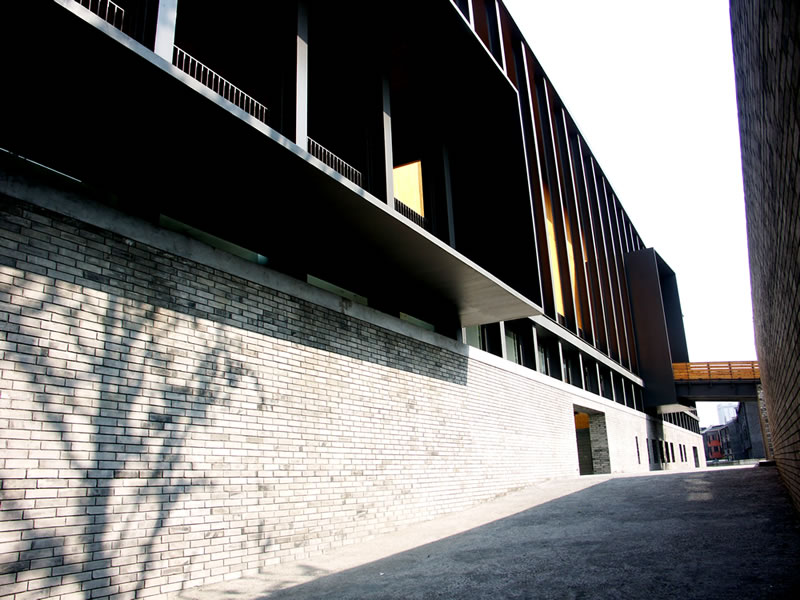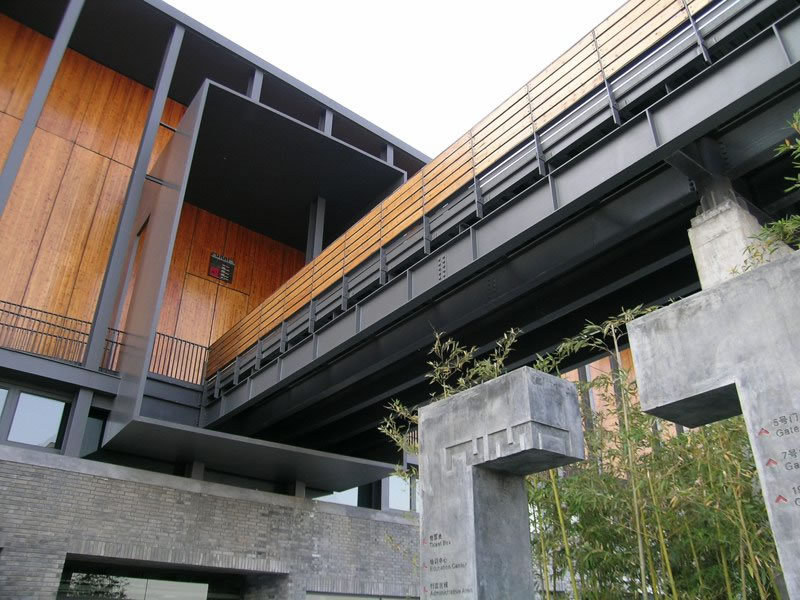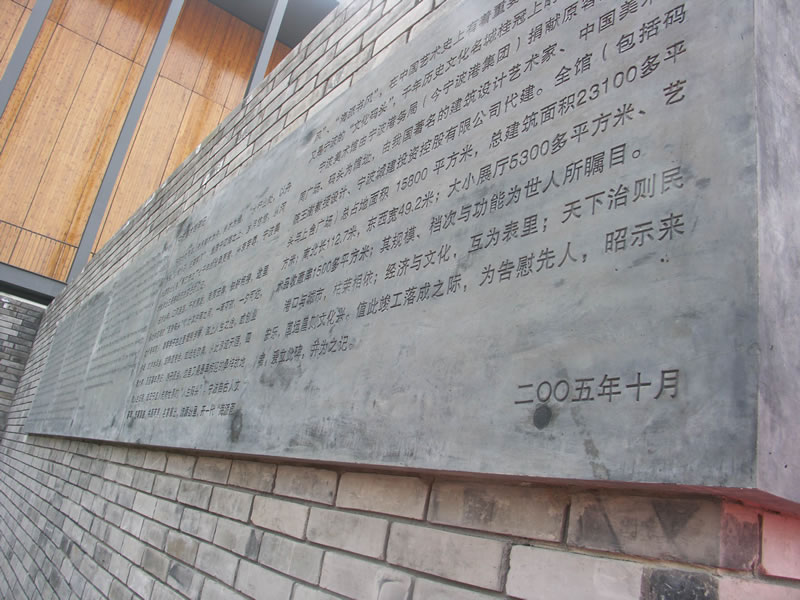
Ningbo Museum of Art is a non-profit cultural instituttion with strong support from Ningbo Municipal Government. Opened in October, 2005, the museum has been dedicated to collection, research and exhibitions of modern and contemporary artistic works in Ningbo, China and from abroad. We strive to build the museum into one of top-class museums in the country with distinctive local features.

Currently, the Museum is divided into two branches, the Old Bund Main Branch in Jiangbei District and the Dongqian Lake Branch in Yinzhou District. The Main Branch is one of the representative buildings of Wang Shu, a Pritzker Prize winner. Located on the northern side of “Sanjiangkou”, the junction of Yong River, Yao River and Fenghua River, the Main Branch covers an area of 15,000 sqm with an architectural area of 18,900 sqm. It has exhibition halls and galleries of around 6,000 sqm and an artwork storeroom of over 1,700 sqm. The Dongqian Lake Branch (Ningbo Dongqian Lake Photography Art Exchange Center) is located on the south bank of the Dongqian Lake with an area of over 15,000 sqm. The total architectural area is over 7,000 sqm. The Museum has exhibition halls, galleries, an artwork storeroom, communication and creation rooms, artist studios, multi-functional halls and a library.

It is a member of CIMAM (the International Committee of ICOM for Museums of Modern and Contemporary Art), a National Fine Arts Graded Examination Long-term Demonstration Institution, and one of the first National Art Gallery and Museum Derivative Development Pilot Institutions as determined by the Ministry of Culture and Tourism.
Ningbo Museum of Art is one of the most typical works of Chinese architect Shu Wang, who won the Pritzker Architecture Prize in 2012.

Ningbo is by the sea. The forefathers scooped trees to make boats and chopped wood to make oars. "People moved on water and lived in mountains, using boats as carts and oars as steeds." The ancestors lived here on fishing. Yongjiang, the mother river, runs from Hemudu, a birthplace of the Chinese culture, through 7000 years of civilization, to Beilun, an imposing modern seaport. It bears the impress of the rise and decline of times and keeps memory of the honors and disgrace of the people. The Ningbo Museum of Art is just located where the Ningbo Port used to be,a place which has testified the vicissitudes of the port city.
Back in early times, merchants flocked here to seek opportunities. Far beyond at the eye level on the Yongjiang River were merchant ships, running head to tail. The port was a dock for both merchants and scholars of Ningbo to go seeking fortunes or knowledge in other countries or places. As a ship from Shanghai could reach Ningbo overnight, generations of Ningbonese bid farewell to their folks at this dock and headed for Shanghai, Hong Kong, Taiwan, and even Europe and America. When they came back to their home town, this was always the place they first set foot on. Ningbo has long been a birthplace of talents, and particularly talents of calligraphy and painting. Numerous virtuosos were born here, representing different schools and styles. They have developed the Shanghai-style painting and the Shanghai-style calligraphy, which take an important status in China’s art history. Therefore, this place is also famed as a Culture Dock of Ningbo-a jewel on the crown of the famous historical and cultural city.
Ningbo Museum of Art comes from a renovation of the donated passenger building, the square and the terminal of the old Ningbo Port. The donator is the former Ningbo Port Administration (presently Ningbo Port Group). The Museum is designed by Prof. Wang Shu, a famous architect with China Academy of Art, and built by Ningbo City Investment Construction Co., Ltd. It is 112.7 meters long (E-W), and 49.7 meters wide (N-W). The Museum, including the dock and the upper square, covers 15,800m2 of land, with a total construction floorage of 23,100m2. The exhibition halls total 5,300m2, and there is a 1,500m2 store room for art works.
The Port and the City go through foul and fair together; economy and culture set off each other; a stable and thriving country makes its people well off, and prospers the culture as well. On the occasion of the inauguration, we have the memorial tablet set up here in memory of our forefathers for the generations to come.
October, 2005
